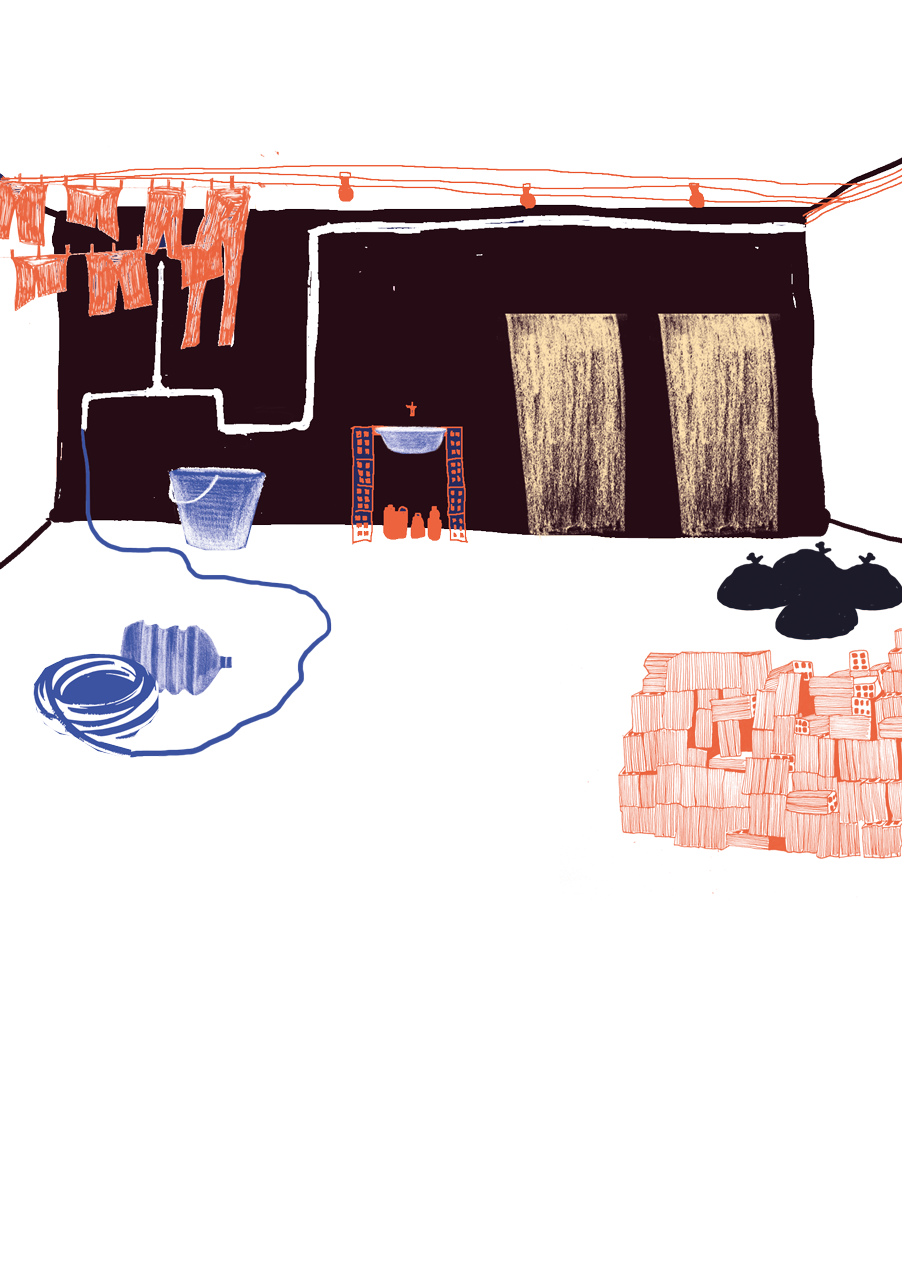
Ocupação Penaforte Mendes, Bela Vista district, Sé Sub prefecture
Amarilis is 25 years old, single, indigenous, works in a hospital as a pharmacy technician and is in the first year of the same university. Born and raised in São Paulo, she has lived in the community for 4 years, as indicated by her mother, who has lived in the area for 6 years. She wakes up early to go to work and says that she went through difficult situations, until the time of installing the pump and water tanks. Before, there was a lack of water in the building.
“… the water comes from the street, returns to the water tank by pump and then distributes it.”
“… now I live on the second floor, but before I lived on the third floor and the water didn’t reach. I borrowed a hose from the porter next door and I took the water up there. Otherwise, there was no way to wash the clothes. This was before the pump was installed, right? ”
“… I don’t have a machine. I’m afraid of eviction, so I keep a rental house in Campo Limpo. I wash small pieces by hand, but large ones I take to Campo Limpo on weekends. ”
“There is an occupation that is very bad … here there are times that are lacking, but it is not like in other occupations that people spend 2 days without water.”
“People say that it arrived at dawn and had no water. But I’m asleep so I don’t know, right. ”
Dona Rosa, 62 years old, black, born in Maracás, Bahia. She arrived in São Paulo in 1990 and has since worked as a domestic worker. She worked in a family home, but with the start of the pandemic she became unemployed. She has worked in the social movement MMC for more than 15 years and has been in the occupation since its first day. She lives only with her partner in a stable union regime. She got involved with MMC to get out of the rental situation. In the beginning there was no running water in the building, so she took water with a bucket from the hostel next door. With regard to other occupations, much less water is lacking today. After they bought the water tanks and the bomb, everything improved. Today all the taps are connected to the water tank and the network that comes from the street. Even so, she buys drinking mineral water to drink. She washes her clothes on Tuesdays and Thursdays in the morning, as she like to do this type of activity early in the morning.
Margarida, 23, single, black, works as a manicurist in a beauty salon. Born in São Paulo, she lives in the occupation with 2 other people, one of them her son, of 6 years. She says that at the beginning, as soon as she arrived, it was very difficult because there was always a lack of water and they needed to bathe with a bucket and mug, using water borrowed from the neighboring hostel.
“At the beginning we had a year without water with only a bucket on our head.”
On the water supply in the pandemic: “It got worse because Sabesp does not legalize it and when it rains it is a relief.”
“When I run out of water I have to buy, or go to a neighbor that is a public hostel.”
“Very difficult, huh old man. Why so hard. Because the government, in addition to the slowness of the government, has the problem that the government does not want to meet the demands of the people. that the first thing they say is that it’s a bunch of tramps, invaders, unwilling to work, unemployed… and that’s not true. ”
“Each movement has its main concern. But for us water and light has always been a cause for concern. The human being does not live without water and without light. ”
“Sabesp must be pissed off because the guys are spending water without paying. It is true. Because they don’t want to legalize the people’s water. I advocate the legalization of water and electricity. And I defend that if necessary we pay IPTU. I defend that. On the day that these people become owners, they will have to pay for water, electricity and property tax. ”
Leadership, Seu Antúrio, a 71 years old black man, popular educator of the movement, has participated in the struggle for social justice since he was 14, both in rural and urban movements. Today he no longer lives in any occupation, but he has followed the movement’s three occupations since its creation in 1986. For him, human beings do not live without water, especially in the city, so it has always been a demand of the community. No resident pays a water bill at PenaForte Occupation, as all connections between the building and the public network are informal.
During the pandemic, due to the lack of assistance from Sabesp, the residents themselves were organized to install hygiene equipment. There were no actions by Sabesp or the City Hall to guarantee access to water for all.
Ocupação Penaforte Mendes is located in the central region of the city of São Paulo, at Doutor Penaforte Mendes street number 30, in a 6-story building. The originally commercial building was occupied by the MMC movement (Movement of Housing in the Center) on September 2, 2012 and today 30 families live in it. The MMC is a movement to fight for housing that was created in 1986 and that today assists families in 3 occupations, with the Occupation Penaforte Mendes.
The infrastructure for water supply and sewage collection in the building is quite homogeneous, mainly because it is a vertical construction and because there is already an entire built water and sewage network in the building. All connections between the public network and the building were made by informal connections, including sewage. Part of the building’s infrastructure was reused and another part was self-built and financed by the residents themselves, such as the purchase of a pump and the implementation of lower water tanks in fiber boxes and upper ones in concrete boxes. The bathrooms are collective organized by gender and are located in the public corridor on each floor. There is a male and a female bathroom with a shower, sink and toilet on each floor of the building. The washing tank and washing machine are also located in the corridor. The only network that is private to each housing unit is the kitchen tap.
The residents have no water problem for bathing, washing or cooking, because, although informal, all the water and sewage networks in the building are connected to the public network. They buy bottled water to drink and choose the time to wash clothes according to the availability of daily tasks and the water flow in the building. There is usually a water cut in the evenings until the morning.
All construction and installation and cleaning improvements have been made by the residents themselves. Although the public network is connected to the building, residents do not have formal access, that is, they do not pay for the water bill and are not recognized by the water company as users. Thus, residents do not claim their rights in times of water shortage. From the perspective of the leadership, the issue of water and sewage (sanitary issues) appear as priorities along with other demands.

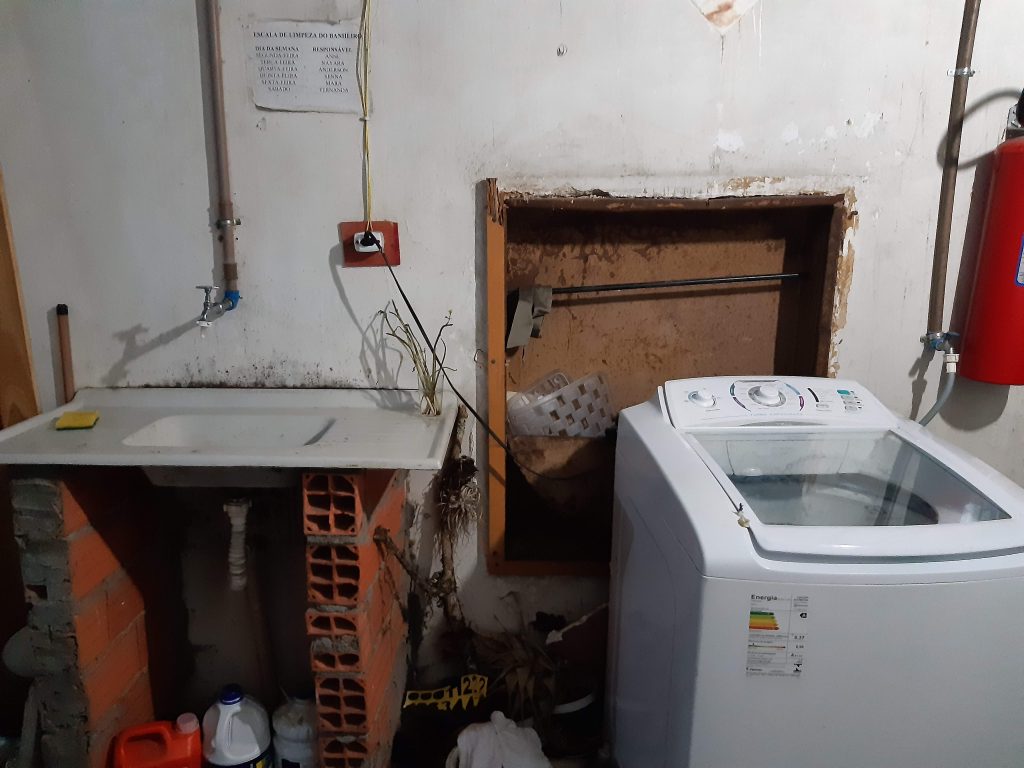
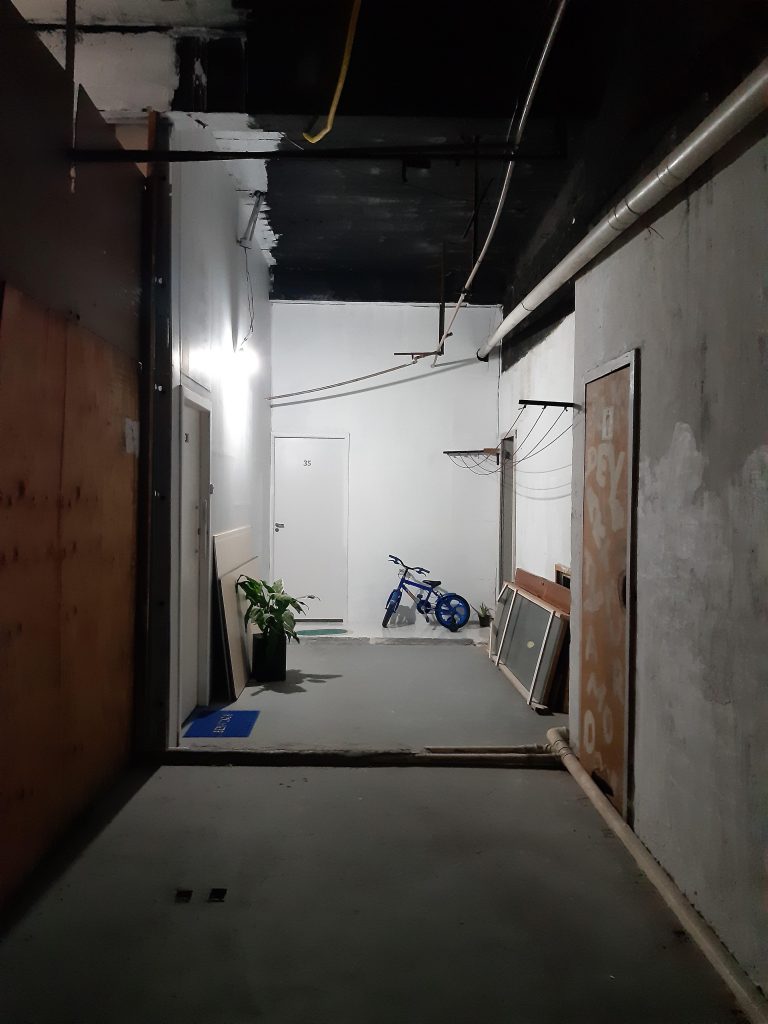

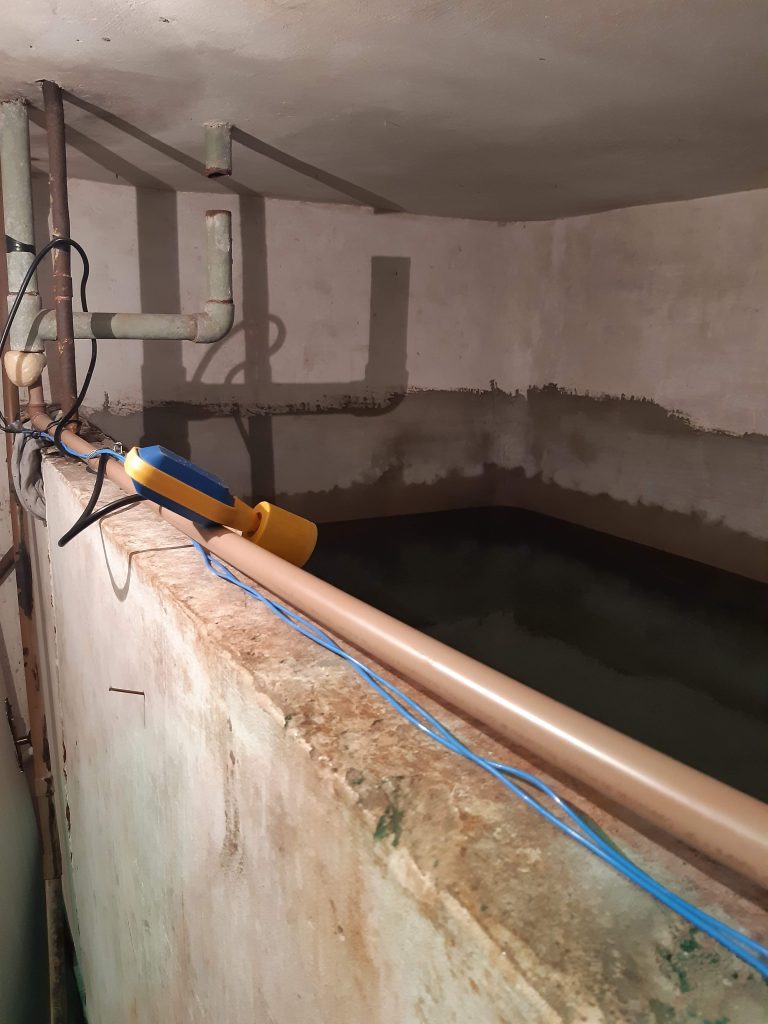

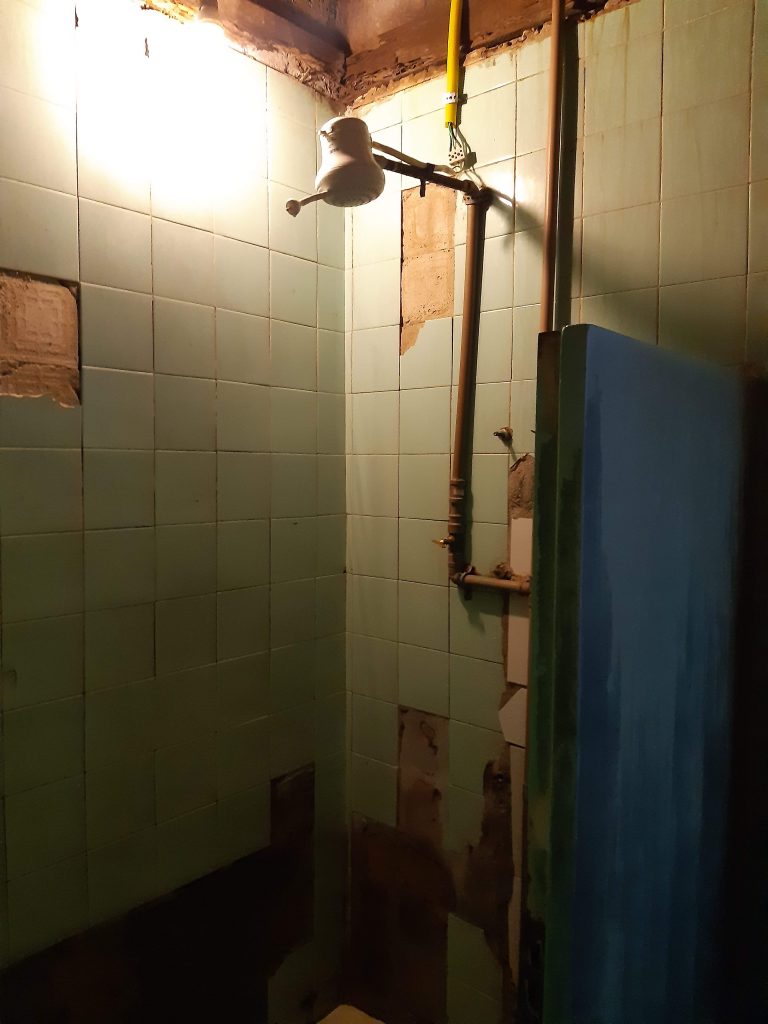

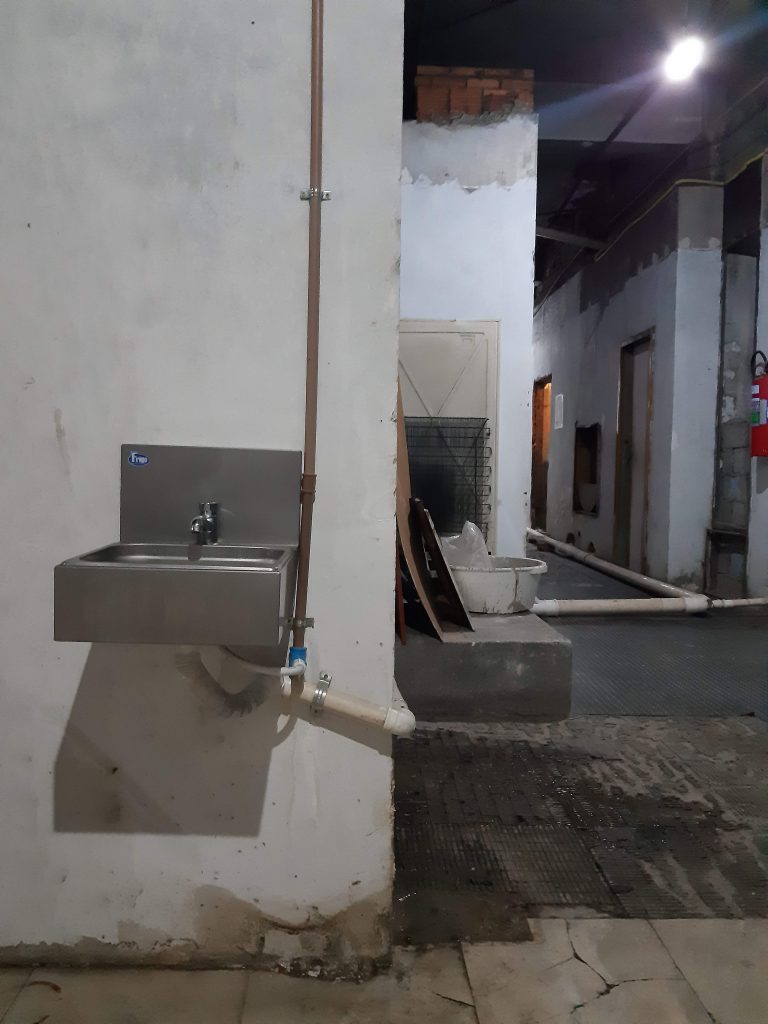
Photos by: Veridiana Godoy e Fernando Botton






